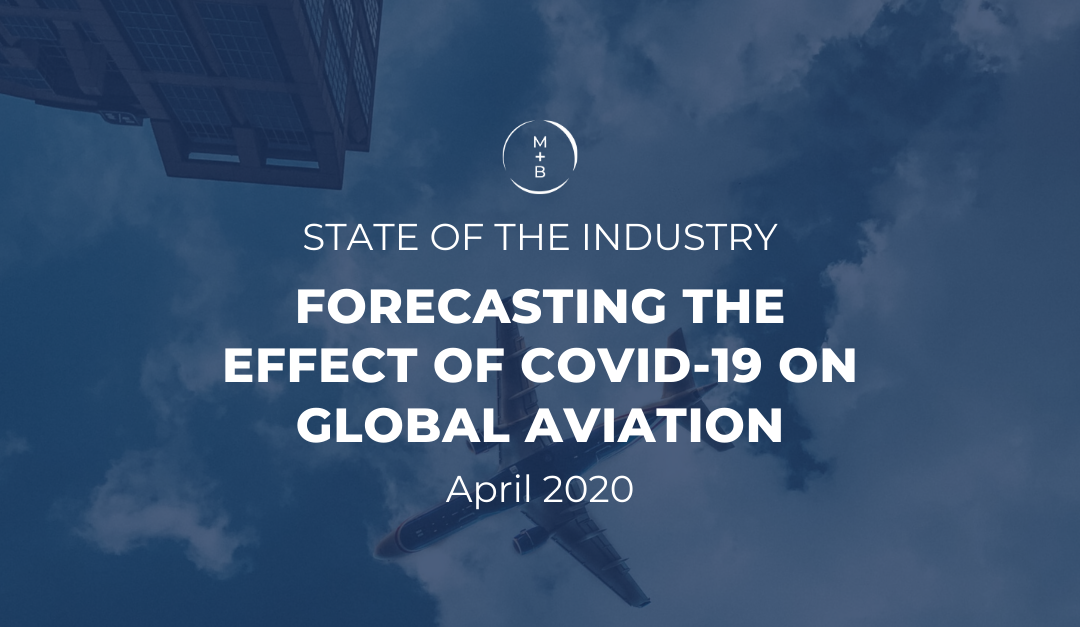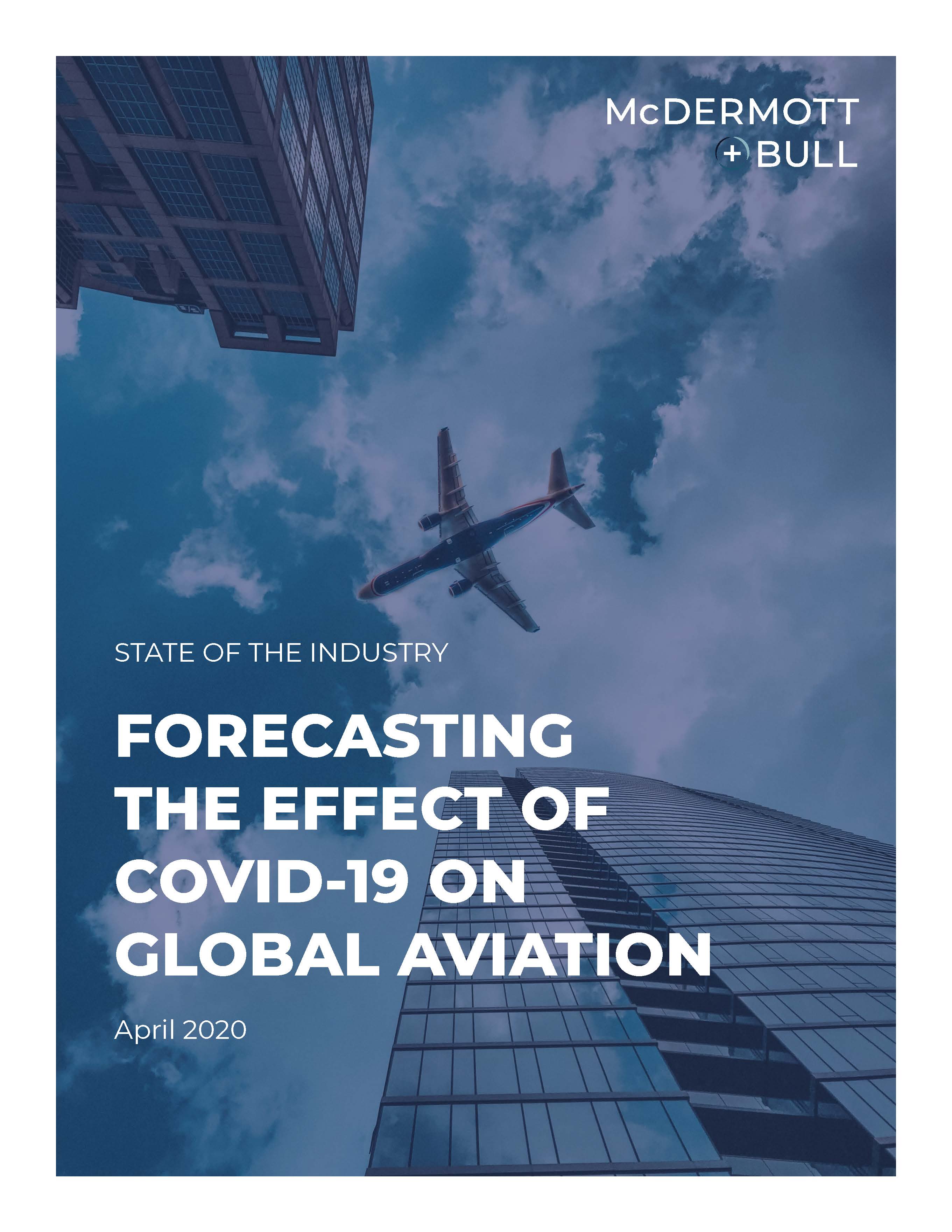EXECUTIVE SUMMARY
It seems cliche to write on the topic of COVID-19, as most of our days are filled with lively discussions with our teams, industry contacts, and families about recent news, and what we are seeing and hearing in the marketplace. However, as I sit here in the home office today, after another morning filled with calls with leaders across the industry, hearing how things are impacting them and their companies, it is difficult to think about much else.
There is no denying that these are challenging times. While the defense sector has seen very little slowdown due to the advantages of long cycles and being deemed an essential industry, the commercial aviation sector is facing a situation unlike any we have seen since its inception nearly 100 years ago. While it is impossible to forecast the impact with total accuracy, we have many data points that help us infer how things will play out in the near and long-term future.
In this article, I will focus on aerospace as it relates to commercial aviation, highlighting the anticipated short-term and long-term effects that we see taking place.
SHORT-TERM
It will be no revelation to anyone that the aftermath of COVID-19 will have a strong residual shock to the industry. Second only to Healthcare, the airline industry has been severely affected by the pandemic. The International Air Transport Association’s (IATA) recent forecast shows roughly half of all airline business disappearing in 2020, resulting in full-year passenger revenues falling by $252 billion compared to 2019. This is especially sobering as just five months ago we had a bullish forecast of nearly 5% higher airline profits for 2020 compared to 2019.
While Q1 has been marked by the initial shock of COVID-19 measures such as shelter-in-place orders and mandatory social distancing throughout the globe, Q2 will prove to be the most critical for the survival of many companies. While variable costs can be reduced with the expected grounding of up to 80% of the world’s aircraft fleet and fuel prices falling dramatically, all airlines still have many high-fixed and semi-fixed costs. In addition, there is an estimated $35 billion of tickets currently due for refund. IATA calculates that with these factors in play, airlines may burn cash at a rate of $61 billion in Q2 alone.
It is critical to remember that the above forecasts are only for the airlines. The true impact of COVID-19 can only be assessed with understanding how many companies depend on the airline industry’s performance. As IATA’s CEO Alexandre de Juniac said, “If airlines lose one job, another 24 disappear somewhere in the value chain…” and the organization is projecting that 25 million jobs are now at risk. This figure jumps to over 65 million if you include the broad sectors of all travel and tourism.
The MRO sector reacts on a slight lag to the rest of the industry but is beginning to see the effects of COVID-19 as well. Assuming that the virus is under control in the next few months, and travel demand bottoms out from April through mid-summer, the current trajectory for fleet reductions and lower aircraft utilization will reduce global MRO demand by over $26 billion, or nearly 30%, in 2020 according to a recent Oliver Wyman study. Smaller MRO providers will be threatened the most by this pandemic.
“If airlines lose one job, another 24 disappear somewhere in the value chain…”
Alexandre de Juniac, CEO, IATA
LONG-TERM OUTLOOK
While there is no denying that COVID-19 will have an incredible impact on commercial aviation in the short term, nearly every conversation we have had with industry executives over the last few weeks have shown optimism about the continued growth of the industry long term. We cannot know for sure how many months it will take for commercial aviation to recover from this pandemic. There is still uncertainty about the contained spread of the virus and how soon a vaccine will be available, but even the most conservative estimates are showing no more than 18 months until the industry is once again roaring.
The concern we hear most is that even after the virus is contained and normal travel can continue, an economic recession will delay recovery as discretionary spending will be down. However, as IATA points out in their recent report, fiscal and monetary stimulus should generate a strong rebound in 2021. As long as airlines do not run out of cash before recovery arrives, business will once again begin to thrive as there is no indication of a fundamental shift in travel post COVID-19 events.
Looking past 2021, the forecast remains extremely strong for commercial aviation. The industry has survived multiple global crises in the past, from 9/11 to SARS to the economic meltdown of 2008; each time coming back stronger. While COVID-19 points to being the most challenging crisis to date, a fundamental shift in travel habits for people around the globe is not expected, nor should it be. One aerospace executive I spoke with this week reminded me of when video conferencing first hit the mainstream business world in the 1990s and many in the business community feared it would impact global air travel. However, statistics show that it actually increased air travel as the technology helped many middle-market companies realize they too could become global.
Even with the devastating short-term effects of COVID-19 on the travel industry, commercial aviation is still expected to double in the next 30 years. While airline traffic has been at an all-time high in recent years, the overwhelming majority of the world’s population has still never taken a flight. Many do not realize this, as IATA reports show that airlines recorded over 4.3 billion passengers in 2018. However, these numbers can be deceiving as they do not represent discrete individual travelers, but the number of tickets sold and used.
Therefore, if you took 20 flights in 2018, you counted as 20 of the 4.3 billion people. Two years ago, Boeing’s former CEO Dennis Muilenburg stated that less than 20 percent of the world’s population has ever taken a single flight, and in 2018, 100 million people in Asia alone flew for the first time.
Will the rate of people flying for the first time be slowed by COVID-19? Without a doubt. However, there is also no doubt that even though we now face a recession, the long-term curve of the global economy continues to go up over time.
As of 2018, over half of the world’s population is now middle class or wealthier, and since the 1990s, millions of people have been lifted out of poverty each year, despite several recessions. With the continued advancement in technology and the intertwining of international economies, the curve will continue to go up, and these macroeconomics have a direct correlation with the commercial aviation industry.
IN CHALLENGING TIMES, HEROS ARE BORN
Even more encouraging than the long-term outlook for commercial aviation are the stories that we continue to hear about companies in the aerospace industry galvanizing their people and resources to aid in the fight against COVID-19. There are too many heroic acts to list, but a few highlights include:
Gulfstream has donated personal protection equipment to hospitals in New York, made monetary donations to charitable organizations helping the less fortunate most threatened by the economic impacts of the virus, and is now using 3D printers to make medical equipment. They have been able to do all of this while also keeping production lines open and their G-700 flight-test campaign going.
Other GA companies have rushed to join the fight as well. We’ve seen Piper Aircraft and Duncan Aviation shift resources to manufacture face shields and masks for hospital workers on the front lines of the pandemic, and Cirrus Aircraft is using CAD software and 3D printing technology to design cost effective respirators and blower units for hospitals.
Larger players such as Honeywell Aerospace, Boeing, and Rolls-Royce are using their manufacturing might to expand production of masks, ventilators, and other medical equipment in their facilities. Lockheed Martin has donated more than $60 million in COVID-19 relief funds, as well as their corporate aircraft and vehicles for COVID-19 logistical support and medical supply delivery. The list goes on and on.
As we observe these heroic acts taking place by players in aerospace and countless other industries, it is hard not to be inspired. It is a testament to our spirit that we are in this together and will overcome this great challenge like we have done so many times in the past. McDermott + Bull is proud to be able to play a very small part in the fight as well, as our work still continues for our clients’ critical hires, both permanent and interim, as strong leaders with new skillsets are being called for in order to navigate these times. We can never be fully certain of what lies ahead, but we can be certain that if we hold true to the values of innovation, hard work, and service, we will emerge from this fight stronger than ever.

ABOUT THE AUTHOR + FIRM
Jared Moriarty is a Managing Director at McDermott + Bull, based in the firm’s Southern California headquarters. He co-chairs the firm’s Aerospace + Defense practice, leading search engagements for clients across the nation. He is a licensed private pilot, based out of John Wayne Airport in Orange County, and his aviation experience has proven invaluable with many of the firm’s aviation clients. Jared received a Bachelor of Science in Finance from the University of Connecticut and his MBA from Chapman University.
Leveraging deep vertical experience, innovative thinking, and proven time-saving methodologies, we challenge the norm and thrive in the recruitment of difficult-to-find VP to C-Suite executive talent.
We value a personalized service model while having the resources and capabilities of the world’s largest search firms. With experienced partners in Canada, the United States, and Europe, we are the trusted retained search advisor for empowering change on behalf of private and public companies, nonprofit organizations, private equity firms, and their operating companies.


